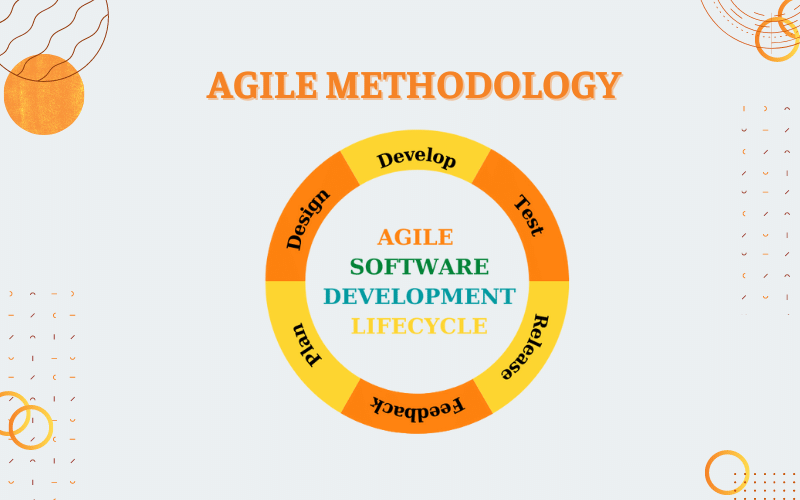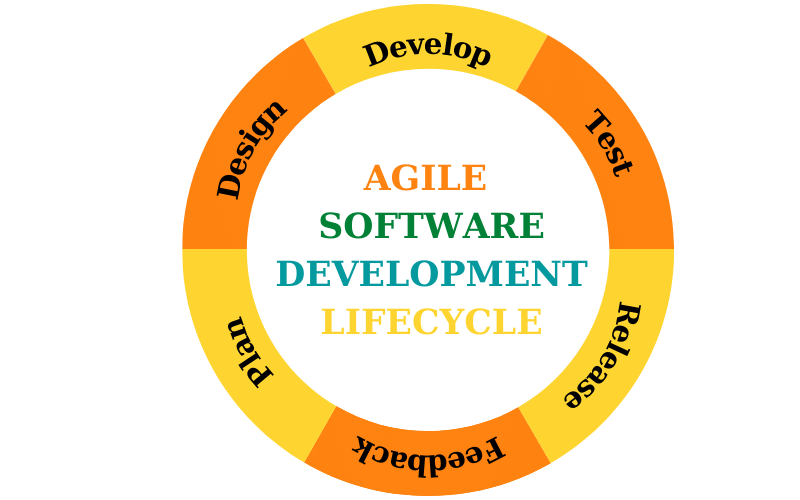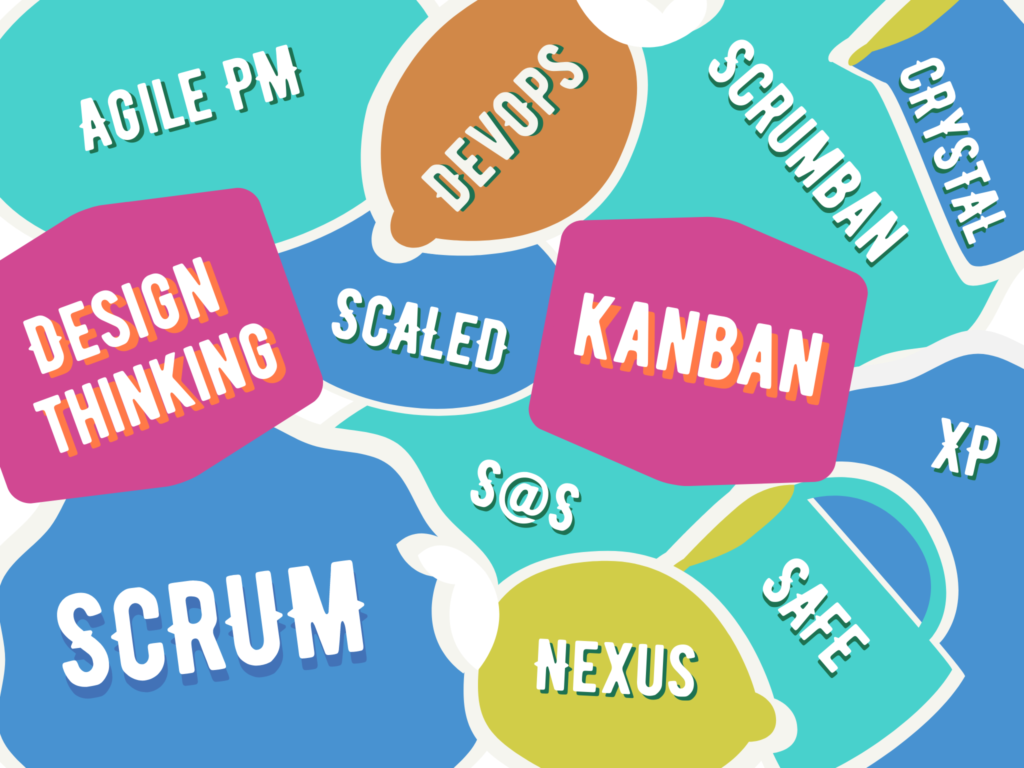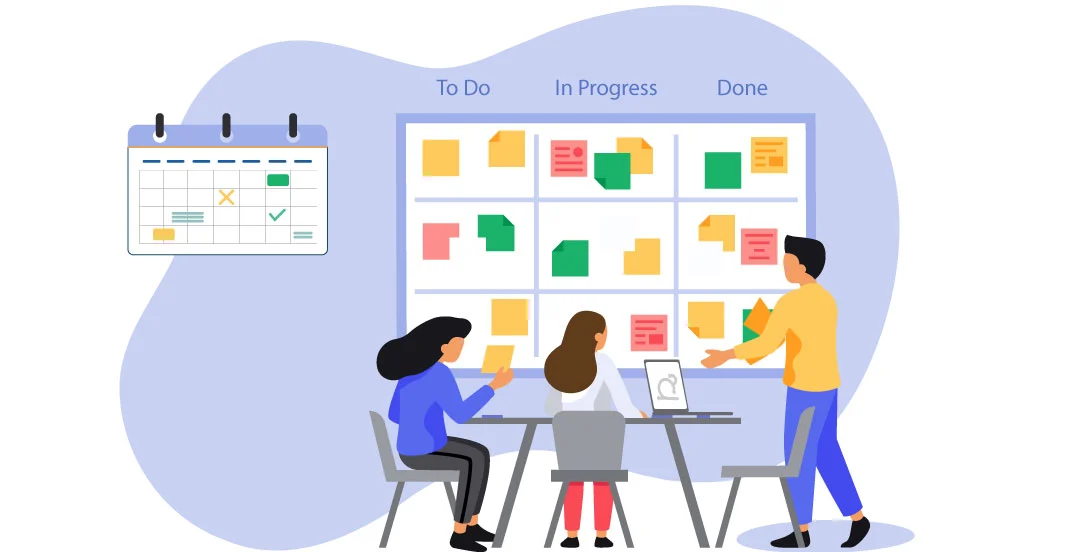Agile methodology: Definition, Phases and Types

Agile methodology: Definition, Phases and Types

The definition of Agile Methodology
The agile methodology is one of the most straightforward ways to turn a concept and various requirements into workable software solutions. The Agile methodology is an iterative and incremental approach to software development that emphasizes continuous planning, understanding, updating, team collaboration, development, and delivery. The agile method is broken down into individual teams’ models, allowing for more adaptability to changes.
The agile process begins with customers specifying the end uses of the final product and the types of problems the final product seeks to solve. It is guided by the ideals of giving value and engaging with stakeholders. This activity aids the project development team address and clarifying the customer’s expectations and requirements.
The selected teams prepare and work on a comprehensive process that includes planning, implementation, and evaluation as soon as the project begins. Errors are resolved at the project’s intermediate stage because the development process is iterative. This method allows the final supplied product to better match the customer’s needs.
Agile method steps

There are six phases of the Agile life cycle:
Concept
The first step in using the Agile approach is to determine the scope of the projects and prioritize them. Begin by sitting down with your stakeholders and your team to discuss and brainstorm business opportunities and estimate the cost and time for each project. You can then identify what tasks are viable and worth the effort and prioritize your backlog of projects by analyzing the backlog.
Inception
Once you have a clear idea of the scope of your project, then the second step will be to determine the best way to finish it. What kind of people do you need on your team? What are the customer’s initial requirements? Make a diagram to outline team roles and the work that must be completed throughout each sprint.
Iteration
Once your initial plan is defined and accepted by the development team, you will begin to work on the initial iteration.
The fundamental workflow in this phase is:
- Requirements – Confirm requirements based on the product backlog and stakeholder feedback.
- Development – Design the product on the specifications.
- Testing – Perform QA tests to verify the functions and find any problems.
- Delivery – Produce a functional product.
- Feedback – Collect feedback from customers and stakeholders to determine the specifications for the next version.
Release
After several repetitions, you’re ready to decide to release the final product. In the release phase, you’ll perform final testing and quality control to discover any issues or defects, address them, and complete the user manual before the release into production.
Production
Your product is now available to the world! The production phase indicates that your product is now live. Ensure your team provides ongoing monitoring and support to ensure that your system is in good working order and that users know how to use it.
Retirement
When your system has become outdated or needs replacement, it enters the retirement phase. All end-of-life actions, such as contacting customers and transferring the system release out of production, are included in this stage.
Xem thêm: What is Software Development? Benefits and Process
8 Key Types of Agile Methodology
Agile is a mentality and a set of values and principles. Agile is a method of thinking and doing. Agile is concerned with short cycle times, incremental and iterative delivery, failing to quickly receive feedback, providing value to customers rapidly, and interacting and collaborating.
Agile is a philosophy that is focused on transparency, inspection and adaption. It doesn’t include the following: roles or events or objects. It’s a mentality. For instance, Scrum is one of the most widely-used frameworks within the Agile umbrella. While it can assist in your journey to becoming more Agile, numerous other frameworks are part of the Agile movement, including Kanban, XP, Crystal and many others:

Scrum
Scrum is a methodology for addressing complex adaptive challenges while producing and delivering high-value solutions productively and creatively. It is used to manage software projects and develop products or applications. It focuses on an adaptive product development method in which a cross-functional team collaborates to achieve a common goal in as little as 2-4 weeks (Sprint). A collection of values, artifacts, roles, ceremonies, rules, and best practices make up the system.
Lean Software Development
Lean began in Lean was born out of Toyota Production System, or TPS, that revolutionized the manufacturing of physical products during the 1950s, ’60s and onwards. Lean remains a dominant force in the manufacturing industry. Still, it has also discovered new uses in knowledge work, assisting enterprises across sectors to eliminate waste, enhance processes, and encourage innovation. Software development is a typical application of the Lean method. Like manufacturing, it typically is a prescribed procedure, is governed by specific requirements for acceptance, and leads to the production with tangible benefits. The fundamental principles that guide the practice of Lean methodology that we call “the Pillars of Lean” include:
- Continuous improvement
- Respect for people
- Lightweight Leadership
Kanban
Kanban is a highly visual workflow management method popular among Lean teams. In fact, 83% of Lean teams use Kanban to visualize and actively manage product creation, focusing on continuous delivery without overburdening the development team. Kanban, like Scrum, is a method for assisting teams in working together more efficiently.
Kanban is built on three fundamental principles:
- Visualize your day’s work (workflow): Seeing all of the objects to one another can be highly instructive.
- Limit the amount of unfinished work (WIP): This helps to keep the flow-based strategy in check so that teams don’t take on too much work at once.
- Enhance flow: When a task is completed, the next highest priority item from the backlog is called into action.
Kanban promotes continuous cooperation and supports active, ongoing learning and improvement by defining the best possible team workflow.
Dynamic Systems Development Method (DSDM)
DSDM is an organizational framework composed of eight fundamentals such as a lifecycle, products such as roles and responsibilities, and various best practices. They form the basis of an approach to delivering business benefits that are strategically aligned as soon as possible to ensure that an organization gets the most significant returns on investments (ROI).
DSDM is a process that puts quality and schedules over functionality, which helps to fix cost, quality, and time in the beginning and employs MoSCoW, the MoSCoW method of prioritizing that breaks a project into four distinct kinds of requirements:
- Must have (M)
- Should have (S)
- Could have (C)
- Won’t have (W)
Eight fundamentals underpin DSDM Atern[13There are eight fundamentals that underpin DSDM Atern[13. These guidelines guide the team to adopt the mindset and the mentality they need to adapt to ensure that they deliver consistently.
- Focus on the business need
- Deliver on time
- Collaborate
- Never compromise quality
- Build incrementally from firm foundations
- Develop iteratively
- Communicate continuously and clearly
- Demonstrate control
Extreme Programming
Extreme Programming (XP), initially outlined in the work of Kent Beck, has emerged as one of the most well-known and controversial Agile methods. XP is a method of discipline to provide high-quality software swiftly and continually. Its goal is to increase the quality and speed of delivery to changing demands of customers. It encourages high involvement of customers, rapid feedback loops, ongoing testing, continual planning, and close collaboration to release functional software regularly, usually every three to four weeks.
The term “methodology” comes from the notion that the benefits of the traditional practices in software engineering are elevated to “extreme” to new levels. For instance, code reviews are regarded as to be a suitable method. If taken to the extreme, code could be constantly reviewed using pairs programming.
The first XP method is founded on four values: the simplicity of communication, feedback and bravery.
It also has twelve additional practices:
- Planning Game
- Small Releases
- Customer Acceptance Tests
- Simple Design
- Pair Programming
- Test-Driven Development
- Refactoring
- Continuous Integration
- Collective Code Ownership
- Coding Standards
- Metaphor
- Sustainable Pace
Feature Driven Development (FDD)
Feature Driven Development (FDD) was first introduced in 1997 by Jeff De Luca when he worked on an application development project for the largest Singapore bank. FDD is an incremental process for software development and is a method of agile development to develop software. FDD integrates a variety of widely-respected best practices into an integrated whole. These practices are guided by the client-valued functional (feature) standpoint. The primary purpose of FDD is to provide real-time, functional software quickly. The benefit of FDD is that it can scale for large teams thanks to the idea of ‘just enough design initially’ (JEDI). Thanks to its feature-centric design process, it’s a fantastic method to control rapid, incremental, and complex projects. It is comprised of five fundamental tasks:
- Development of an overall model
- Building of a feature list
- Planning by feature
- Designing by feature
- Building by feature.
Each project will be unique to the model, resulting in a feature list. The final three tasks are quick iterative steps, and a feature should not take more than two weeks to construct. If it takes longer than two weeks, it must be divided into smaller components.
Crystal
Crystal techniques are part of a set of methods (the Crystal family) created in the late 1990s by Alistair Cockburn in the mid-1990s. The methodologies result from many years of research and interviews of teams conducted by Cockburn. Cockburn’s research revealed that the teams studied didn’t follow the official procedures, but they nevertheless created success with their projects. The Crystal family is Cockburn’s method to record the actions to make the projects successful. The Crystal method is concentrated on:
- People
- Interaction
- Community
- Skills
- Talents
- Communications
Scaled Agile Framework (SAFe)
A collection of workflow and organizational models to help implement agile practices on an enterprise level is known as the Scaled Agile Framework (SAFe). The adoption of SAFe lets you benefit from a light approach yet still provides the central decision-making required at the corporate level to ensure software development efficiency. In other words, SAFe takes the agile approach applied to the software managers who have to deal with the more strategic aspects.
Xem thêm: Top 10 Benefits of Customized Software Development
Conclusion
A dynamic approach is required to choose the proper agile methodology among the different agile methods. The benefits and drawbacks of an agile approach must be considered when selecting the appropriate framework for your company to attract talent and provide incredible digital experiences in a highly competitive marketplace.






